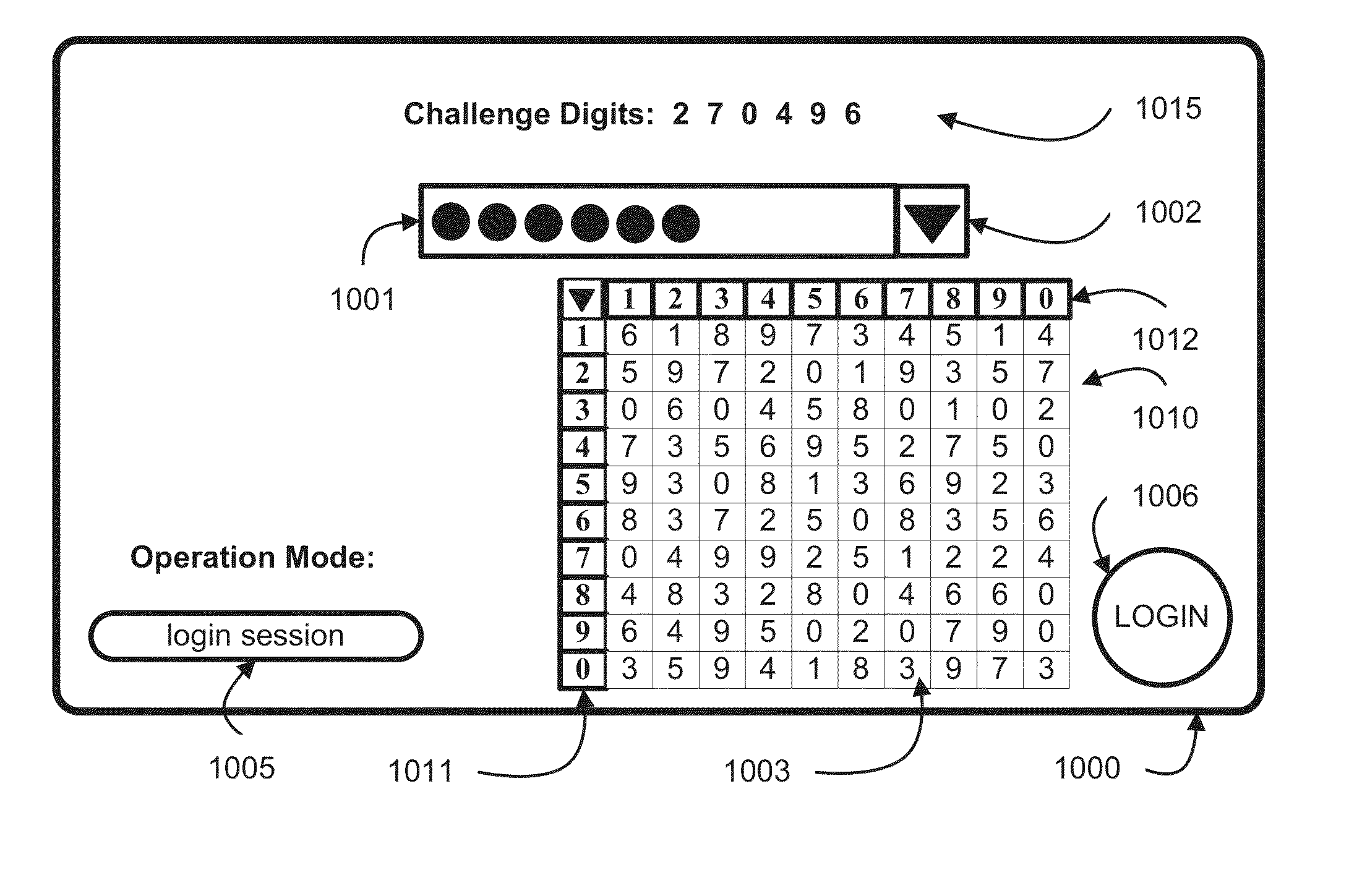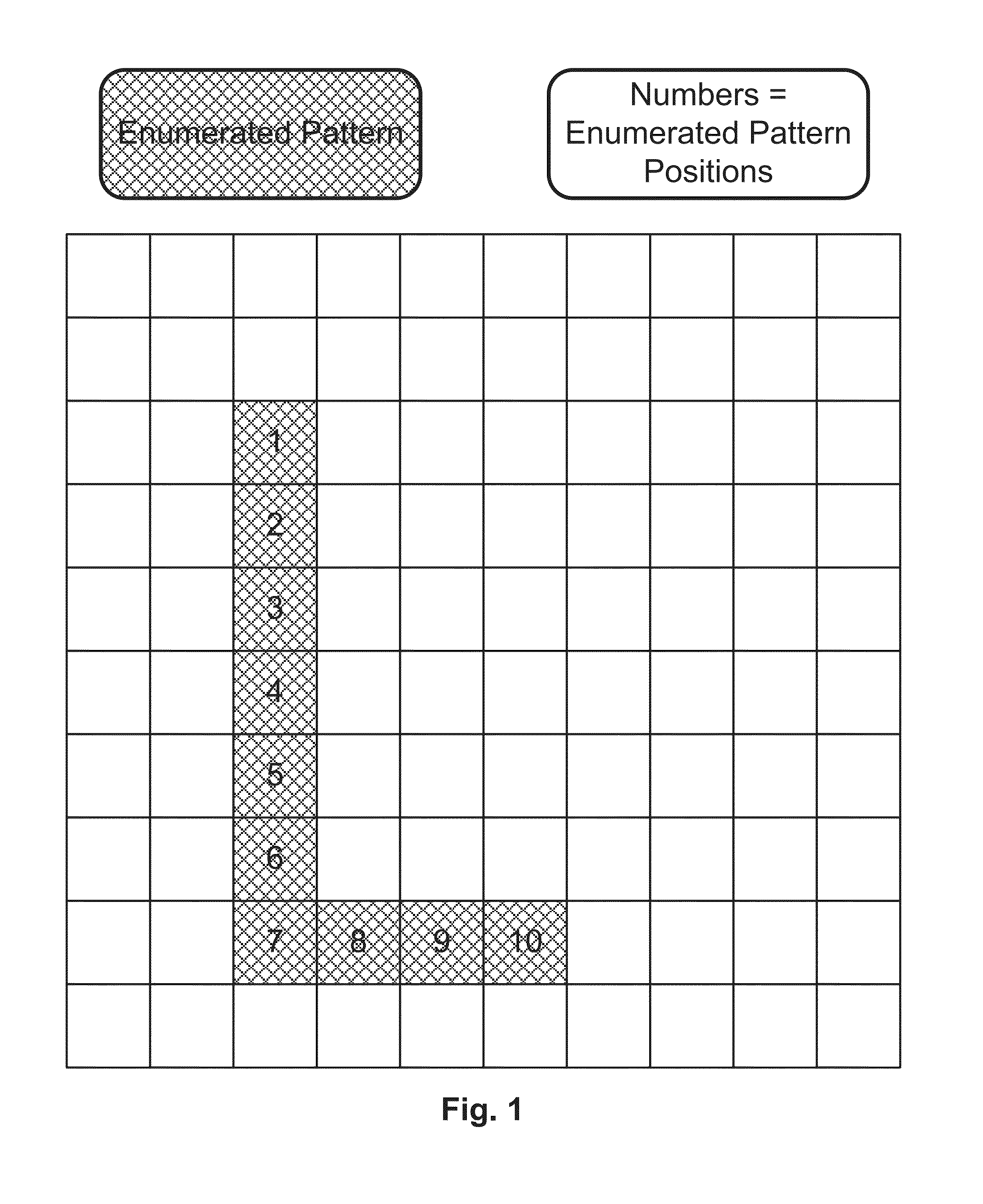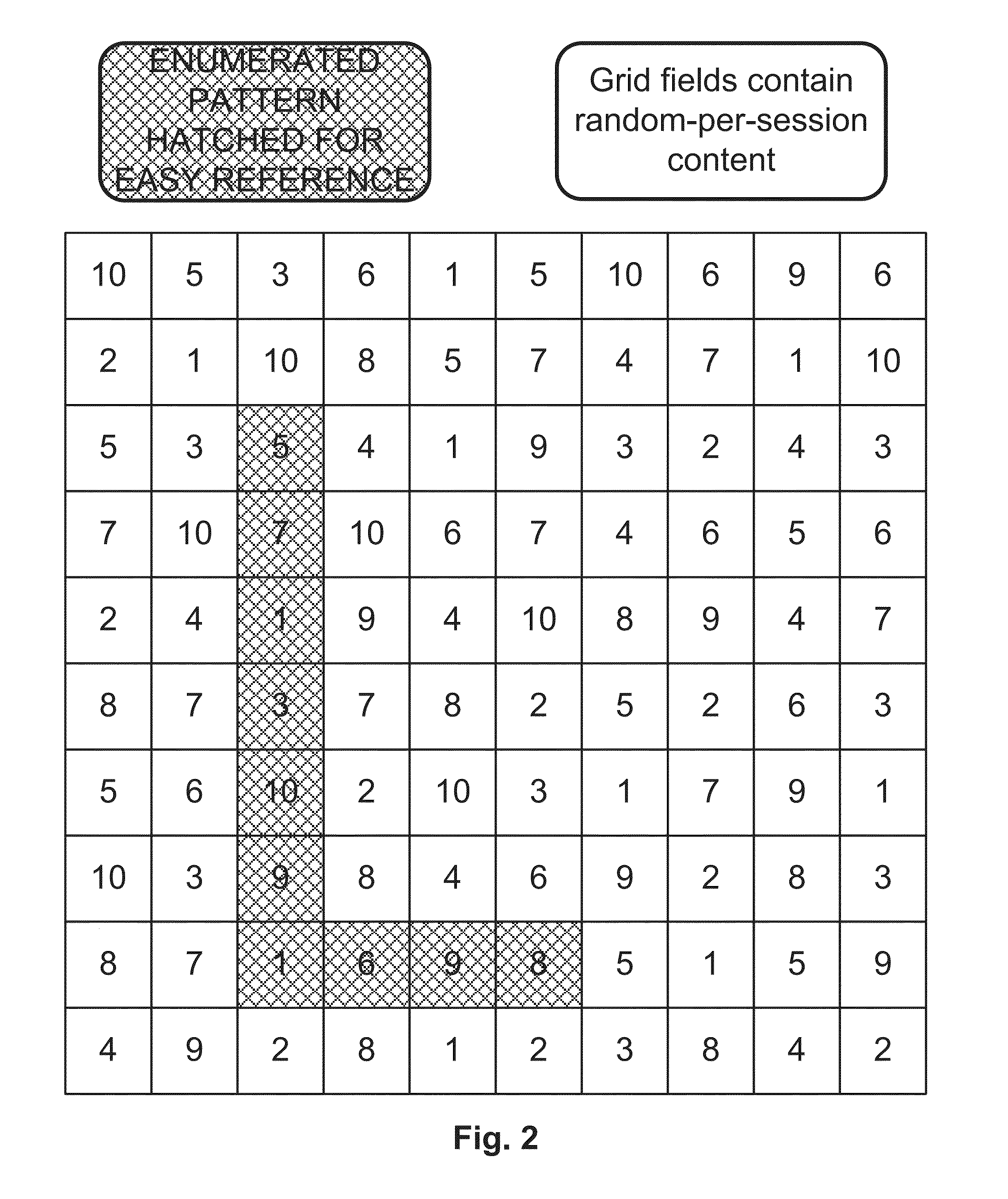Authentication method of field contents based challenge and enumerated pattern of field positions based response in random partial digitized path recognition system
a field content and field position technology, applied in the field of authentication methods, can solve the problems of increasing the cost of frequent credential reset requests, requiring paradigm shift, and inability to solve password problems
- Summary
- Abstract
- Description
- Claims
- Application Information
AI Technical Summary
Benefits of technology
Problems solved by technology
Method used
Image
Examples
first embodiment
[0061]The first embodiment is an all in-band solution. Given a 10×10 grid, first a credential creation operation must be completed to set up the enumerated pattern credential on the grid (FIG. 1). There is second secret credential that is chosen on the grid as well. This is another enumerated pattern based credential that will contain the challenges for the login operation. This secret challenge path is described in Mizrah's U.S. Pat. No. 7,849,321. See FIG. 3 for an embodiment of the credential creation process for the enumerated pattern credential and the secret challenge path. In the prior enumerated pattern credential systems, the challenge path contains the challenge positions. In this invention, the challenge path contains the challenge content. Once the credential is created, then the login operation can be executed. The login operation starts with the same 10×10 grid, and it is filled with randomized digital content (see FIG. 4). In the prior enumerated pattern credential sy...
second embodiment
[0062]The second embodiment is when the challenge is sent out-of-band. The credential creation operation is the same for both prior enumerated pattern credential systems and this invention (see FIG. 1). During the login operation the same 10×10 grid filled with random digital content is displayed to the user, say in a browser. The full challenge is sent via an out-of-band channel, like to a mobile device, to the user as well. In the prior enumerated pattern credential systems, the out-of-band challenge is a position-based challenge, and the response is the digital content in that position of the enumerated pattern credential. In this invention, the challenge is a value, and the response is the position in the enumerated pattern credential that contains that value.
The Essence of Challenge—Response Paradigm Shift in RPDPR Protocol
[0063]The difference between the prior enumerated pattern credential systems' position-based challenge and content-based response and this invention's conten...
PUM
 Login to View More
Login to View More Abstract
Description
Claims
Application Information
 Login to View More
Login to View More - R&D
- Intellectual Property
- Life Sciences
- Materials
- Tech Scout
- Unparalleled Data Quality
- Higher Quality Content
- 60% Fewer Hallucinations
Browse by: Latest US Patents, China's latest patents, Technical Efficacy Thesaurus, Application Domain, Technology Topic, Popular Technical Reports.
© 2025 PatSnap. All rights reserved.Legal|Privacy policy|Modern Slavery Act Transparency Statement|Sitemap|About US| Contact US: help@patsnap.com



